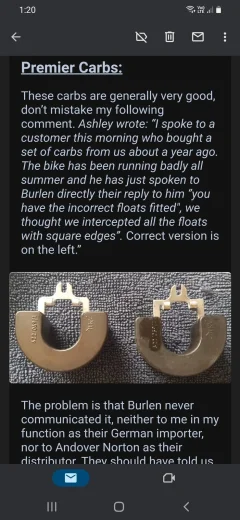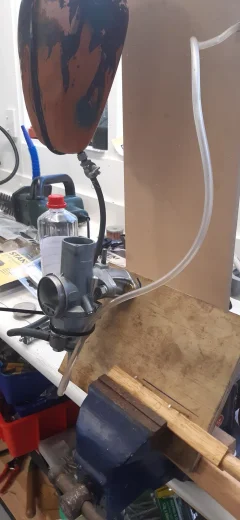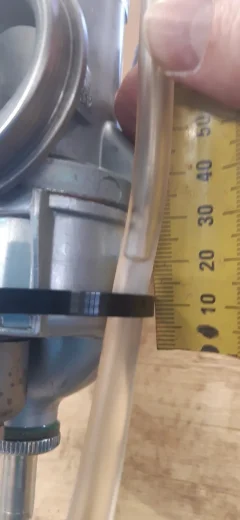johnm
VIP MEMBER
- Joined
- Feb 26, 2008
- Messages
- 1,787
Sometime in the past maybe three years I recall reading a note with a photo describing the updated version of the stayup float. I'm not talking about the original plastic float versus the stay up float but an update of the stayup float which prevented the sticking of the float needle and erratic fuel levels.
I'm pretty certain it was in the Andover newsletter but I have been through the archives and checked about 20 editions and not found the note yet.
I remember it was written by a proprietor of the shop. Probably Andover and he said something like "Amal have updated the float but didn't tell anyone. Would have been nice had they mentioned it to their suppliers so they coukd check their stock."
Can someone please point me to this note? I have been searching for sometime now and cannot find it.
Thanks John
I'm pretty certain it was in the Andover newsletter but I have been through the archives and checked about 20 editions and not found the note yet.
I remember it was written by a proprietor of the shop. Probably Andover and he said something like "Amal have updated the float but didn't tell anyone. Would have been nice had they mentioned it to their suppliers so they coukd check their stock."
Can someone please point me to this note? I have been searching for sometime now and cannot find it.
Thanks John




